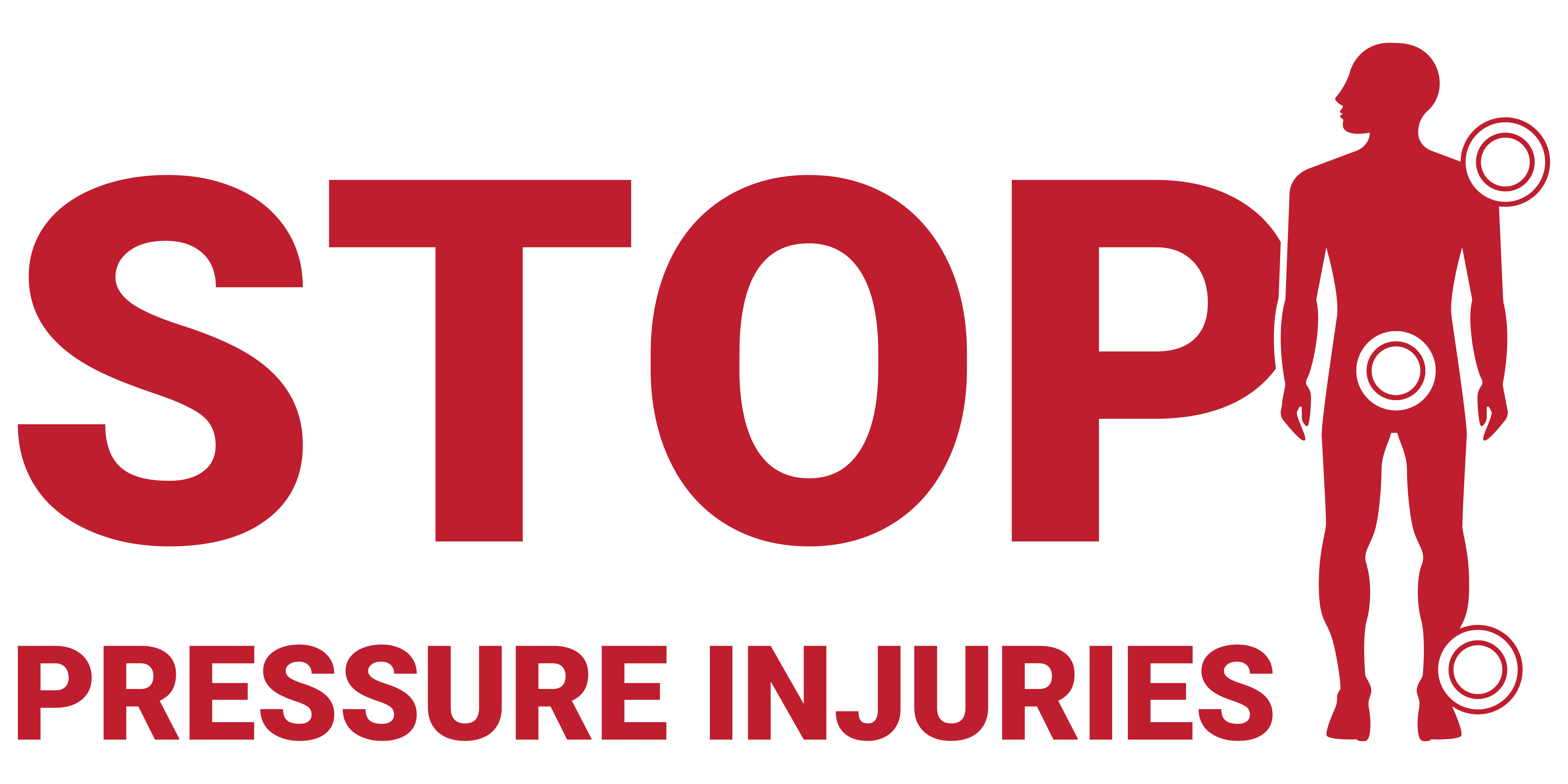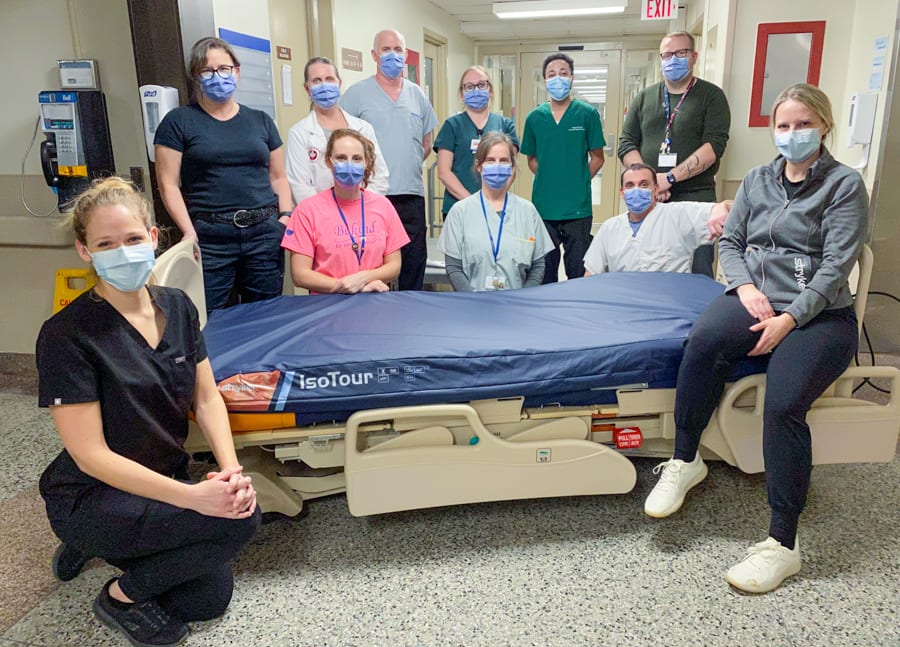
Niagara Health has a dedicated, five-strong wound care team working with patients and frontline staff to prevent pressure injuries. Under the team's guidance, the organization has implemented a number of significant changes to help prevent hospital-acquired pressure injuries.
They’re painful and potentially fatal.
Pressure injuries are also more common than many realize, affecting one in four patients and prolonging hospital stays by four to 11 days.
Also called bed sores, pressure injuries happen when sustained, unrelieved pressure damages the skin and underlying tissue. Bony areas, such as heels, lower back, buttocks and even ears, are especially vulnerable to pressure injuries, which can range from discoloured patches to deep wounds that reach the bone. And yet, as many as 70 per cent of hospital-acquired pressure injuries are avoidable.
Niagara Health and its Wound Care Team, comprised of five specially trained nurses, have implemented a number of innovative initiatives to prevent pressure injuries and improve patient care:
1. Advanced wound care education
To boost staff expertise, Niagara Health introduced advanced wound care education sessions for nurses. These workshops cover how to identify, stage, prevent and treat pressure injuries. Future plans are to include personal support workers in this training.
“PSWs provide essential hands-on care to patients. They have their eyes on patient skin and that makes them our eyes on prevention,” says Lee Bateman, Advanced Care Practice Nurse on the Wound Care Team. “It’s giving them knowledge of what an early sign, like redness, is and what it isn’t.”
2. Partnering with families and caregivers
Niagara Health actively engages families and caregivers in its prevention efforts. Posters displayed in inpatient units highlight four patient safety priorities, including pressure injury prevention. These materials, developed in collaboration with Patient Partners from the Niagara Health Engagement Network, aim to raise awareness and ensure messaging resonates with visitors and patients alike.
“It’s everyone’s responsibility to help prevent pressure injuries,” says Tanja Groeneveld, Clinical Manager of Nursing.

Advanced Practice Nurse Lee Bateman.
Patient Partners also play an active role on Niagara Health’s newly formed Pressure Injury Steering Committee, an interdisciplinary team that drives organizational strategies to reduce these injuries.
“We’re trying to empower the entire organization to prevent pressure injuries,” Groeneveld says. “Prevention is a shared responsibility, and we’re committed to leading the way, but we need everyone’s help behind us.”
3. Tracking progress with Pressure Injury Point Prevalence Audits (PIPPAs)
Niagara Health conducts PIPPAs four times a year to measure how many patients have pressure injuries. As a Best Practice Spotlight Organization, the hospital uses the data collected to refine best practices for prevention, improve health outcomes and enhance the patient experience.
4. Empowering wound care champions
Based on the Registered Nurses’ Association of Ontario Best Practice Champions program, Bateman and the Wound Care Team have trained nurses across all five sites to be dedicated wound care champions – experts chosen by their managers to act as the eyes and ears on their units, looking for pressure injuries, training colleagues in real-time care and prevention techniques at the bedside, and supporting the work of the wound care team.
“Our wound care team is a small but mighty team,” Groeneveld says. “These are really engaged staff members who dispense information in the moment when we can’t be there.”
Plans are in the works to expand the program to include PSWs and further strengthen Niagara Health’s pressure injury prevention efforts.

Members of the Niagara Health team who helped with the changeover to gel surfaces in 2023. They are shown here with one of the new surfaces.
5. Upgrading to gel surfaces
Eighty per cent of all pressure injuries occur on the heels and lower back. Niagara Health replaced hundreds traditional foam hospital bed mattresses in medical, surgical and complex continuing care units with gel-filled surfaces. These new surfaces redistribute pressure, absorb body weight as patients move, and offer extra gel cushioning in critical areas like the heels and lower back.
Plans are underway to upgrade surfaces in intensive care units next.
6. Expanding IsoTour Pump Use
Moisture plays a significant role in the development of pressure injuries. Niagara Health’s use of IsoTour pumps – a technology that circulates air through gel mattresses – helps to manage moisture caused by incontinence, wound drainage or perspiration and offers an additional level of pressure injury prevention to patients.

